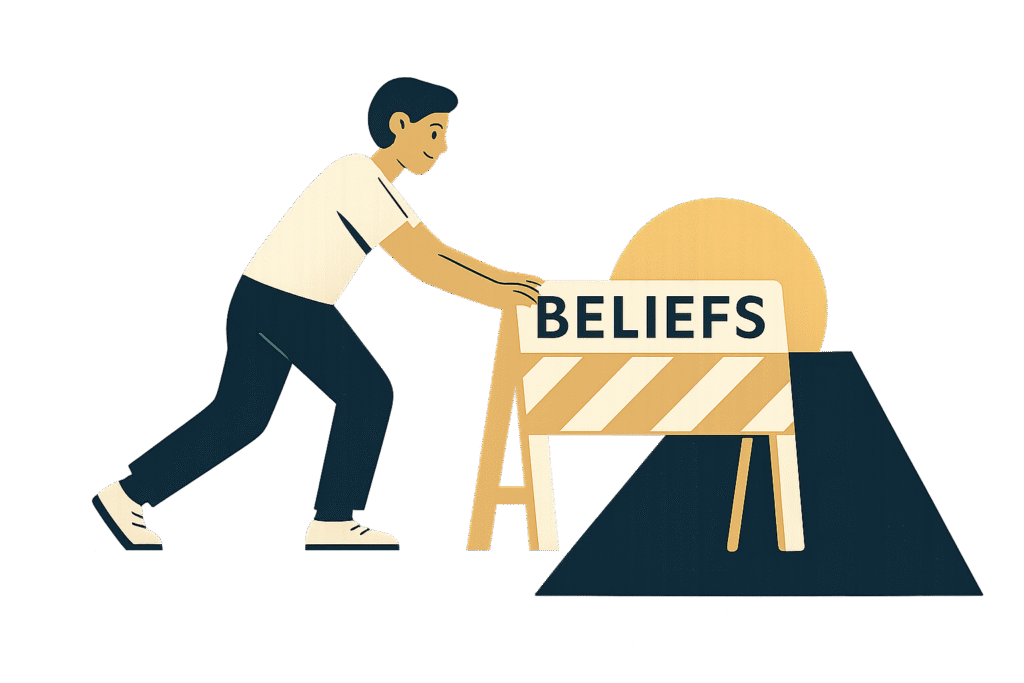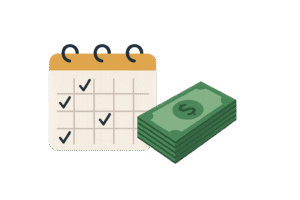If you do not believe an action will move you closer to a goal, why bother trying? Limiting beliefs shut down motivation at the source. Psychologists call this self-efficacy: your confidence that you can influence outcomes. When self-efficacy is low, effort and persistence drop. When it is high, you keep going even when results lag. In short, belief is the engine that keeps motivation running.
Beliefs Are Not Set in Stone
Beliefs look solid. They are not. They evolve as we collect new experiences.
Think back to a childhood certainty that later fell away, maybe being convinced that Santa Claus personally filled your stocking every Christmas Eve. We are adults now, but the mechanism has not changed. A recent high school graduate and an elderly retiree can look at the same situation and draw different conclusions because their evidence libraries differ. The good news: if beliefs are built, they can be rebuilt.
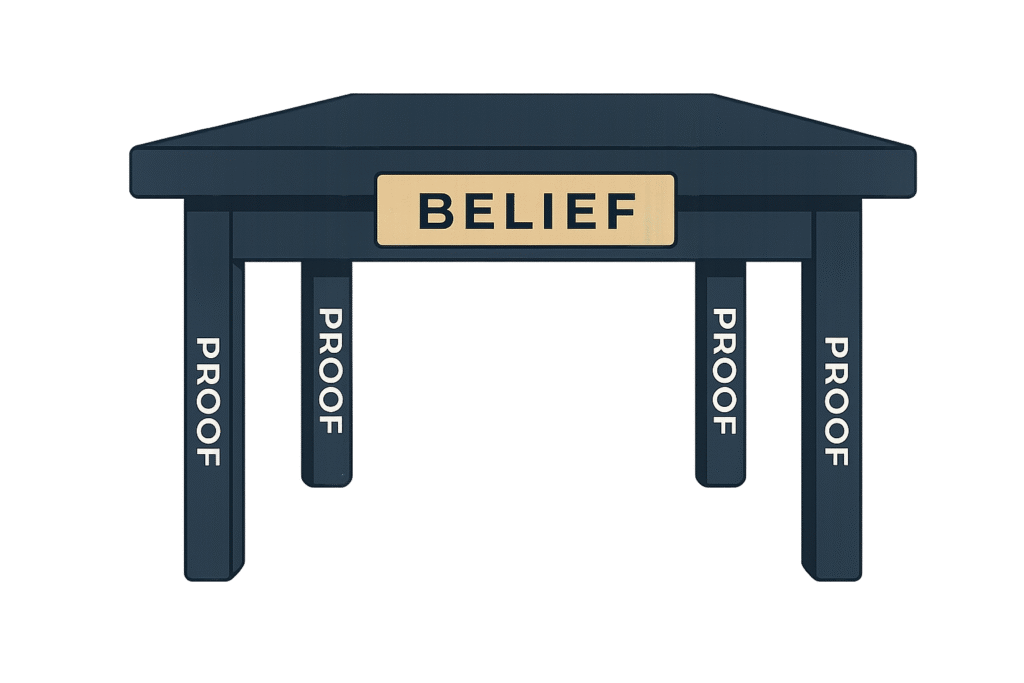
How Beliefs Form: The Evidence Table
A practical way to view beliefs, popularized by Tony Robbins in Awaken the Giant Within, is as a tabletop held up by legs. The tabletop is the belief, and each leg is a piece of evidence, a reference, or a story you accept as true. The more solid legs you have, the sturdier the tabletop feels.
People rarely verify everything firsthand. Most of us know the Earth is round because many signals pile up: photos from space, what we learn in school, reports from observatories, and accounts from navigators and travelers. Long before most people could travel far or see the Earth from above, they accepted the idea because so many independent pieces of evidence pointed in the same direction. It is one of the firmest beliefs we hold, yet for most of us it rests on collected signals rather than firsthand proof. The same construction process shapes your personal assumptions about work, fitness, money, and relationships.
This is why some ideas grip you even when they are not helpful. If you have enough legs under “I cannot sell”, that tabletop stands until you kick out a few legs and add stronger ones under “I can learn to sell”.
Choose Your Evidence on Purpose
Because beliefs are built from references, you can curate them. Hunt for high‑quality evidence that supports useful views and actively remove (or question) the weak legs that prop up limiting beliefs. Be especially careful with “truths” that look obvious at first sight – some are just made-up stories we have repeated.
Common examples:
- “You can only succeed if you were born into money.”
- “With my body, it is impossible to lose weight.”
- “Marketing does not work for businesses like mine.”
Each of these has legs: a story your uncle told you, a past attempt that fizzled, a headline you saw. Your job is to look for better legs such as credible examples, your own small wins, and a clear plan that make the helpful belief steadier than the unhelpful one.
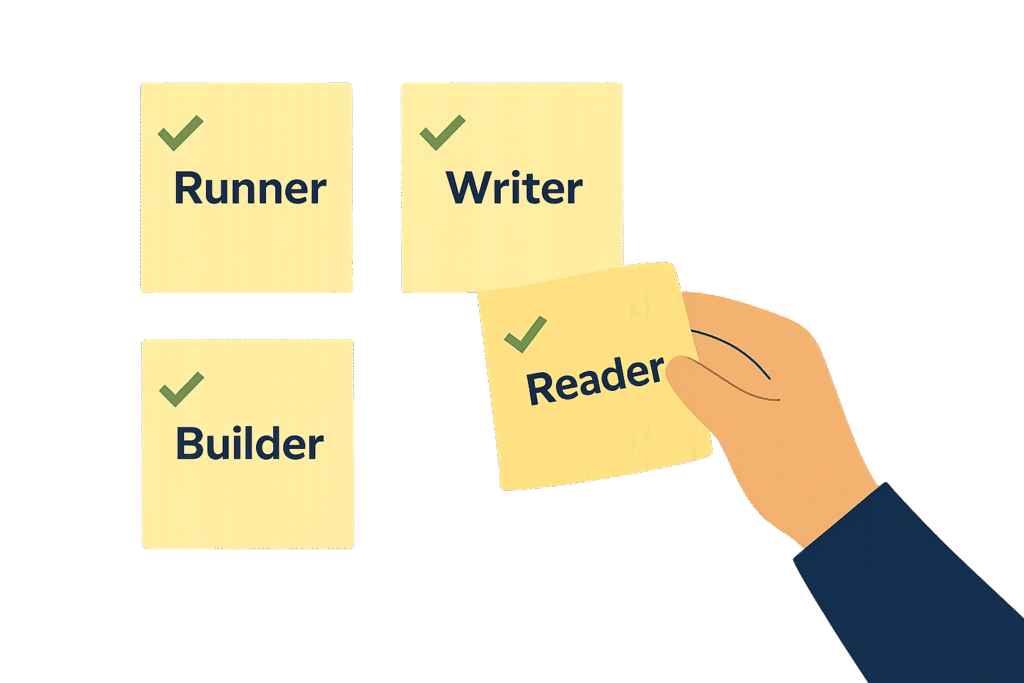
Identity‑Based Habits: Action That Rewires Mindset
Belief shapes action, but action also shapes belief. Habits change the story you tell yourself about who you are. “I am the kind of person who…” might be the most powerful sentence in behavior change. If you run three evenings this week, you are not just ticking tasks. Instead, you are voting for the identity “I am a runner”. This identity‑first approach was popularized by James Clear in Atomic Habits.
People tend to behave in ways that match their identity because we like to be consistent. Public or written commitments strengthen this effect. When you tell friends you are training for a 10K or log workouts in a tracker, you are more likely to keep going because stopping would clash with who you say you are.
This creates a positive loop: identity nudges behavior, and repeated behavior reinforces identity. If your current identity feels thin, start with very small actions and let them compound into a story you believe.
Borrow Belief When Yours Is Low
Sometimes your personal evidence pile is light, especially at the beginning of a project. Borrow it. Surround yourself with trustworthy proof that the outcome you want is possible. These “believers” do not need to be physically around you. They can have a powerful effect on your conviction even when they’re entirely virtual.
That can be:
- Successful people you know: peers, colleagues, local groups.
- Mentors and role models: YouTube, podcasts, books, newsletters.
- Step-by-step demonstrations: build logs, walkthrough videos, recorded workshops.
- Case studies that mirror your context: company blogs, teardown posts, open metrics.
Seeing clear steps with real results makes “possible” feel concrete. Here is the paradox: statistically, many new projects do not work on the first try, especially new businesses. Yet you need that sometimes seemingly irrational confidence that it will work out perfectly to do the work that gives you a chance to get there.
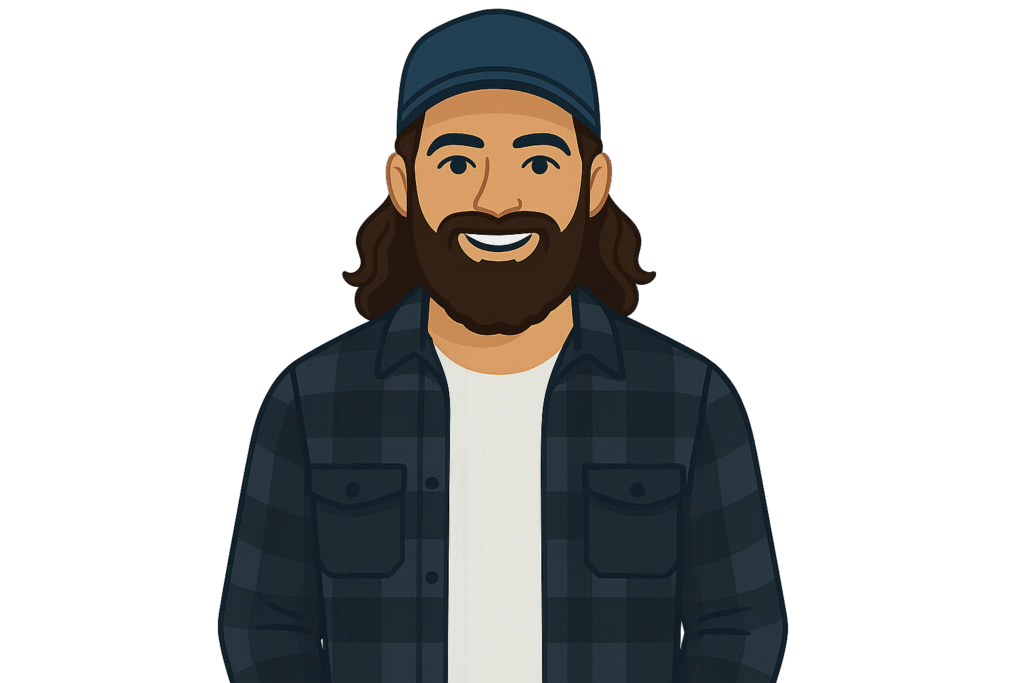
That is why social modeling matters. Creators in any field can make the path feel possible by showing receipts and repeatable steps. You are not guaranteed success, but belief raises your odds significantly because it gets you to take the shots, learn faster, and stay in the game long enough for success to arrive. Let that evidence become a temporary leg under your tabletop while you build your own proof through action.
Why Most Efforts Stall (and How to Avoid It)
Many worthy efforts look unproductive for a while. Marketing, fitness, or learning a new skill – you name it. These often move slowly at first until they start to speed up. The danger zone is the quiet middle, when you have put in work and results are still faint. If you expect instant feedback, confidence drops, you stop, and the compounding never kicks in. Expect a delay. Plan for it. Keep moving long enough to let evidence accumulate.
Protect the Mental Game When Results Are Quiet
The hardest part is believing that the plan still works when results are taking their time to show up. This fragile middle is where a partner matters. At AccountaPartner, we know good things take time. You borrow our confidence until your proof stacks up. In recurring 1-on-1 check-ins, we reconnect actions to outcomes, highlight the right leading indicators, and reset expectations. When conviction dips, we restore it and keep you on cadence so you hold steady long enough to see the curve turn.
Run a Simple Belief Audit
Try this quick exercise to surface and reshape the ideas that block you:
- List your top three “I cannot because…” lines.
- Give each one five minutes of reframing. Ask:
- What evidence supports this?
- What evidence challenges it?
- What would be true if the opposite were true?
- Write a useful replacement view. Business examples:
- “At 20, I cannot start a business because I lack experience and capital” becomes “I am early, have the energy to invest long hours, fast to learn, close to younger buyers, and able to launch lean”.
- “At 50, it is too late to start a business” becomes “I have experience, a network, and savings. I can avoid rookie mistakes and move faster”.
Have you spotted it? Yes! The examples contradict each other on purpose. This is not 1+1=2. In messy, multivariable problems like careers, fitness, or business, there is rarely a single, objective answer you can calculate. You get to pick a stance, so choose one that serves your goal and gets you to action.
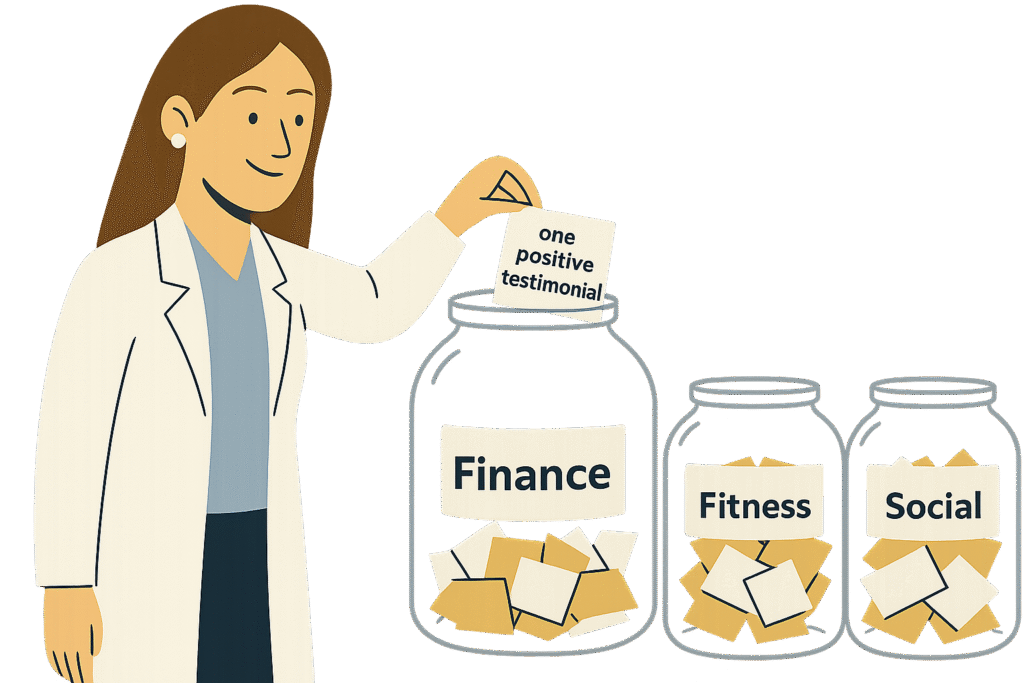
Collect Wins Like a Scientist
Belief is built on evidence. So gather it. Be willing to start noting from insultingly small. Use a simple journal or a backlog of completed tasks.
Based on your goal area, track things like:
- Business: one booked discovery call, first payment received, one positive testimonial.
- Fitness: one extra rep, one more minute on the timer, a tiny PR.
- Social: a 30-second chat with a cashier, a short elevator conversation.
Raise the stakes over time. Each time, aim to make the entry a little harder than the last. Sooner or later, the threshold for “good enough” starts rising on its own as doing the work naturally makes you better. Pin this proof where you see it and set a monthly reminder to review. You are the only person who spends 24/7 with yourself, and from that perspective, daily change is hard to notice. When you zoom out, this progress becomes clear. So let those entries add legs under your new beliefs.
Flip “Fake It” Into “Make It”
Start small, keep taking the next rep, and let results catch up until they fuel your motivation. At first, you are not claiming a permanent truth; you are adopting a more beneficial stance. As your proof stack grows, belief shifts from borrowed to earned.
Motivation is not magic. It is the result of believing the next step matters and then taking it. Build it deliberately: select better evidence, remove weak legs, and use habits to lock in identity. Log small wins, raise the stakes a notch at each review, and expect the middle to feel quiet. Keep going. If you want structure while the proof stacks up, our 1-on-1 check-ins at AccountaPartner help keep the mental game steady. Borrow first. Earn later. Repeat until the evidence is yours.
